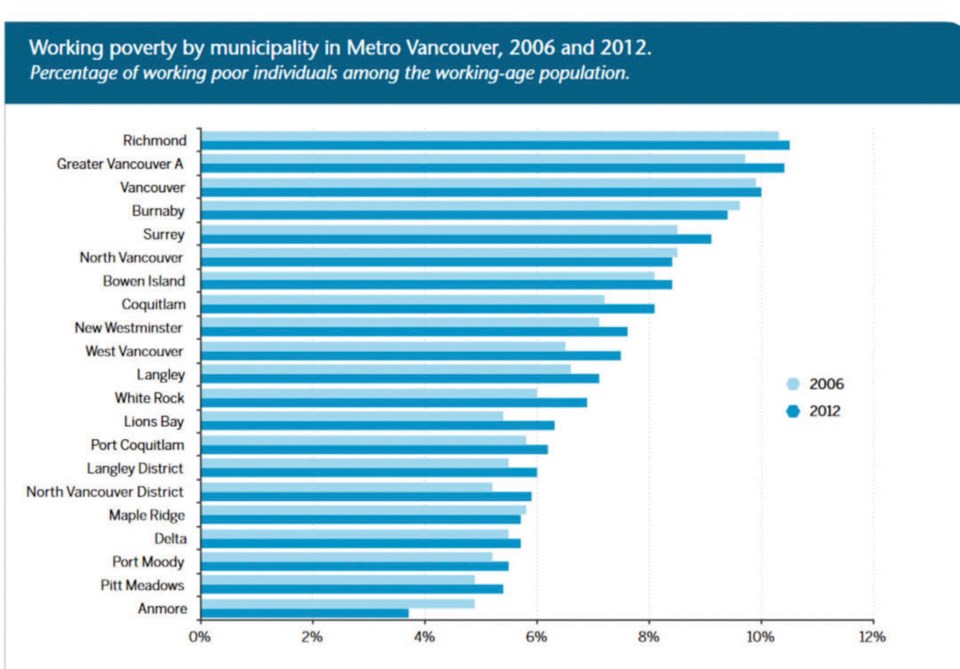Working poverty is a regional problem, although it doesn't appear as severe in Delta.
That's according to a study released last month by the Canadian Centre for Policy Alternatives, which is recommending B.C. adopt a comprehensive poverty reduction plan.
The report highlights how the so-called "working poor" are not just concentrated in Vancouver and Surrey but are spread out across the region.
The study examines Metro Vancouver working poverty trends by neighbourhood pre-and post-2008 recession.
"We are often told that the solution to poverty is for the poor to 'get a job' or for various sectors to create more jobs. But this study finds that a job is not a guaranteed path out of poverty. Over 100,000 working-age people in Metro Vancouver were working but stuck below the poverty line in 2012, not counting students and young adults living at home with their parents," states the report, also a co-publication of the United Way of the Lower Mainland and the B.C. Poverty Reduction Coalition.
The report finds that not only are deep poverty and homelessness highly visible on the streets of Vancouver, hidden poverty and economic insecurity are serious problems across the region.
"Deep poverty is primarily a story of inadequate welfare rates, which remain stuck at levels far below what people need to survive. But the majority of British Columbians living in poverty do not rely on welfare. Fewer than four per cent of British Columbians receive social assistance at any given time, a small share of the more than 14 per cent of people living in poverty," the report adds.
It notes a recent study published by the Metcalf Foundation found that Metro Vancouver had the second-highest rate of working poverty of any major city in Canada in 2012, with a rate only slightly lower than Greater Toronto.
The latest report goes further by mapping the extent of working poverty and its growth by neighbourhoods.
Municipalities with the lowest rates in 2012 included Delta (5.7 per cent), Pitt Meadows (5.4 per cent), Port Moody (5.5 per cent) and Maple Ridge (5.7 per cent) A map showed a couple of stretches in North Delta by Scott Road that were higher than the rest of Delta. Those higher rate clusters merged into a large cluster of centralnorthern Surrey that has a rate of 10 to 15 per cent.
The report adds working poverty can be reduced and eventually eliminated with a combination of labour market reforms, more generous income supports and better public services. The report made a number of policy recommendations, including the province investing in social housing.
Delta this year hired a social planner who is currently undertaking a review of social issues in the municipality. The request to hire a social planner first came before Delta council a couple of years earlier from the Canadian Federation of University Women of South Delta, which warned about hidden and childhood poverty in the community.


